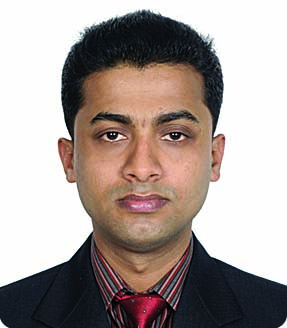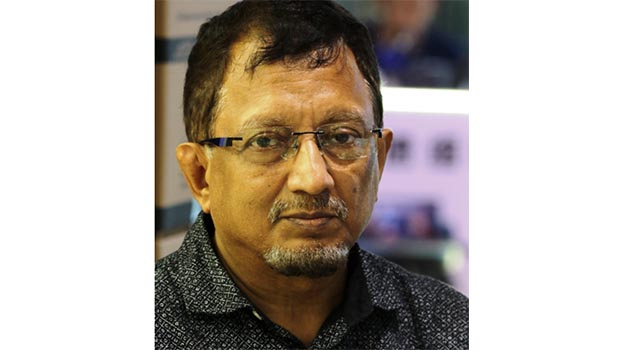Find infection rate before taking any decision: Dr Rob

Bangladesh first needs to know the rate of coronavirus infection in the ‘community’ before taking any decisions, said Country Director of the Population Council Dr Ubaidur Rob.
“Still we don’t know the rate of infection and the pattern of its spread. When garments reopened some people said there’ll be exponential growth of cases, but actually it did not happen,” he told Bangladesh Post in an interview on Monday.
“We must find out the ‘R naught’ (R0) to know exactly the rate of infection and then we can make policy decisions,” he said while talking on the different aspects of the pandemic including the role of NGOs and the private sector.
The question comes as the government is trying to impose strict lockdown in some most affected areas identified by the cases confirmed in laboratories from the people who come to the facilities for testing for their symptoms.
Among those people, the government as of Monday confirmed 90,619 cases since the detection of first cases on March 8. Of them, 34,027 recovered and 1209 died so far.
The government is now categorising areas into red, yellow and green zones based on the density of the confirmed cases. But some experts pointed out that there would be no use of such zonal lockdown without proper knowledge of the level of transmission and infection rate.
It is also said that community transmission is happening in Bangladesh. If it is so, then how long will an area remain locked down as a red zone because the moment it will reopen and people go out, they can get the virus.
“For all of those issues we need to know the rate of infection (R naught) among the population. We also need to test some people randomly in an area to know the exact situation in the community,” Dr Rob, also a leading demographer, said.
Depending on the R0 value, experts can tell the potential of a disease transmission or decline of a disease.
For example, if R0 is less than 1, each existing infection causes less than one new infection. In this case, the disease will decline and eventually peter out.
If R0 equals 1, each existing infection causes one new infection which means the disease will stay alive and stable, but there won’t be an outbreak or an epidemic.
If R0 is more than 1, each existing infection causes more than one new infection which means the disease will be transmitted between people, and the epidemic will go on.
“The R0 value is important in coronavirus pandemic because everyone in a population is completely vulnerable to the disease since it’s a new disease and no one has been vaccinated,” Dr Rob said.
“Now if we calculate the confirmed cases, then we can see that after recoveries we have only 55,000 active cases. Of them, the majority are being treated at home and approximately one-third of the positive cases are from Dhaka city.
“With a population of 165 million and having more than 10 million persons above 60 years, the number of deaths is considerably low. After 100 days of the first detection, we are testing around 15,000 cases per day and reporting approximately 20 percent as positive.
“Most of the people who are tested have some symptoms, but we do not know the proportion among the persons who are not showing any symptoms.
“The proportion of persons tested positive needs some more understanding. As the number of people recovering from Covid-19 increases, they will have a measurable impact on the proportion of cases tested positive,” Dr Rob said.
For example, he said, if 15 percent of the total tests are second tests it will lower the proportion as most of them will be tested negative. Similarly, in the third test, the negative rate will go up further.
“Therefore, we should calculate the proportion with the first time tested as the denominator to show the actual trend. In addition, timely reporting of recovered persons will assist in future planning.
“Timely and accurate calculation of rate of infection (R0) will also help us in determining future action plans,” he explained.
It is observed that 60 percent of the positive cases are in group 20-40 years and another 18 percent are in age group 40-60. Less than 10 percent are over 60 years and the number of deaths is higher among the older persons.
“The health department reported more than 1000 deaths due to coronavirus but the media is also reporting daily basis number of deaths due to virus like symptoms.
“Theses numbers vary but not more than 1000. Therefore, the total number of deaths due to coronavirus like symptoms is still at the lower side.
“Stark gender and employment disparities are also observed. Particularly, law enforcement persons and frontline health workforce are at heightened risk for contracting the virus.
“We must take into consideration these factors and take measures to address them as early as possible,” he said.
With the unprecedented scale and spread of Covid 19, many of us have questions about what we can do right now and in the coming days to improve the health service delivery in Bangladesh.
“In most of the cases, the government is trying their best to provide basic health care services with minimum or no support from civil societies and NGOs,” he said, adding that “surprisingly NGOs are not coming in a big way”.
“We don’t know the reason. But traditionally Bangladesh has a very long and good history of NGOs’ activities since independence.
“Even I have seen when we did not have much resource; NGOs came forward with whatever they had to help the people. But now we have plenty of resources, but the NGOs did not come forward.
“I think big NGOs should take the leadership and mobilise all,” he said, adding that these realities must be kept in mind while developing action plans and policies.
“While we work toward closing the health care gap, it is important to discuss what we can do with the existing health service delivery system during this pandemic and beyond.”
Dr Rob is known for providing leadership and technical guidance in the development, management, and evaluation of research projects implemented by the government of Bangladesh, development partners, and NGOs in Bangladesh.




